A hands-on week of conservation in Kruger National Park

I have had the great fortune of having travelled in many parts of the world and have experienced many things. This was my third trip to Africa, and second to South Africa. I can say, without a scintilla of doubt, this was the most memorable, impactful, emotional and life-altering trip of my life.
My wife, Tamara, and son, Max and I recently spent ten days in South Africa. We were fortunate enough to spend five of those days in the bush near the Kruger National Park, at a temporary camp on the beautiful property of Mr James Campbell, with eight other YPO families and a cadre of world-class resources.
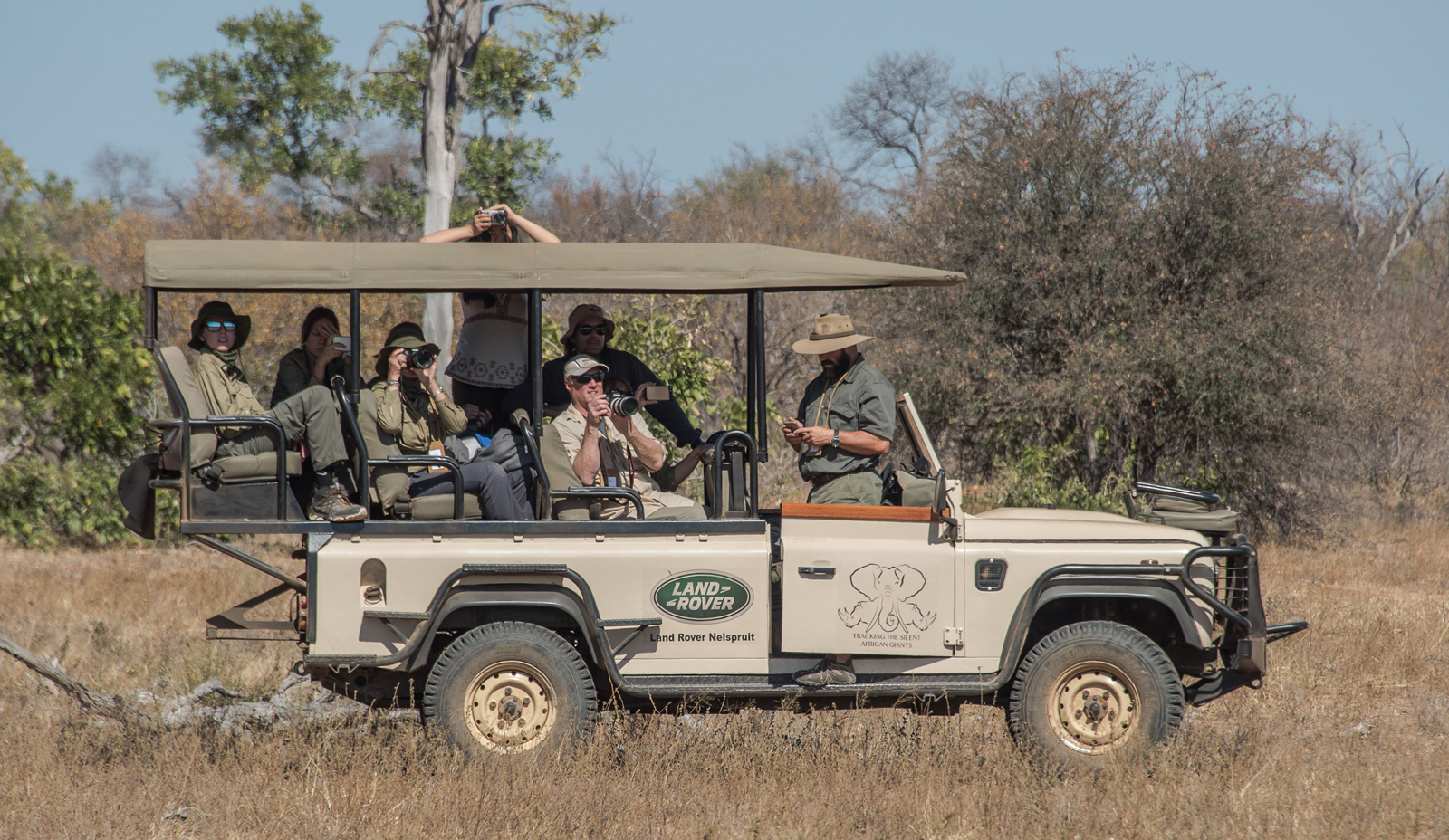
The enthusiasm, optimism, construction and progress that we experienced first-hand while spending time with everyday South Africans was contagious. As Max commented, “I think they may be some of the happiest and most content people in the world!”
Our trip was hosted by my friend, Dex Kotze, a fellow YPOer from South Africa. Dex is a businessman, an activist, a philanthropist, educator, thought-leader and an amazing husband and father. He operates his own NGO, Youth 4 African Wildlife, an educational organisation dedicated to teaching young people about the conservation of wild animals in Africa. For this experience, Dex had partnered with Elephants Alive and other NGOs and reserves and, with the help of the incredible Annie Sowden, he put together a program dedicated to education, adventure and camaraderie.
The YPO Experience
In total, we were nine YPO families, joined by the most compelling group of talented people imaginable. These included everyone from world-class park rangers and guides to scientists, researchers, philanthropist land-owners, activists, a world-class eco-journalist, wildlife vets, adventurers and two of the most insane helicopter pilots I’ve ever seen (have you ever seen a Robinson 44 fly in reverse while chasing after a rhino with a vet hanging out the side holding his dart gun!?).
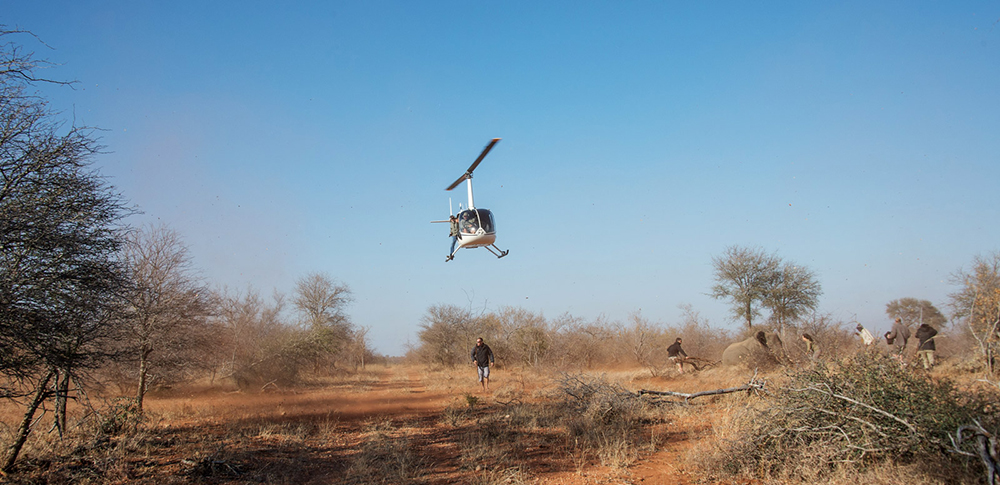
We camped together, drank coffee at dawn around the fire together, drove in search of elephants and rhinos together, walked through the African wild tracking lions together and, most compellingly, participated hands-on in tracking, collaring and tagging wild elephants and rhinos together. And of course, we had ourselves a few ‘proper’ G&Ts at sundown around the campfire together.
All along, we learned about every aspect of the nature around us, from the water to the vegetation, from the trees to the insects and every other type of wild animal around us.
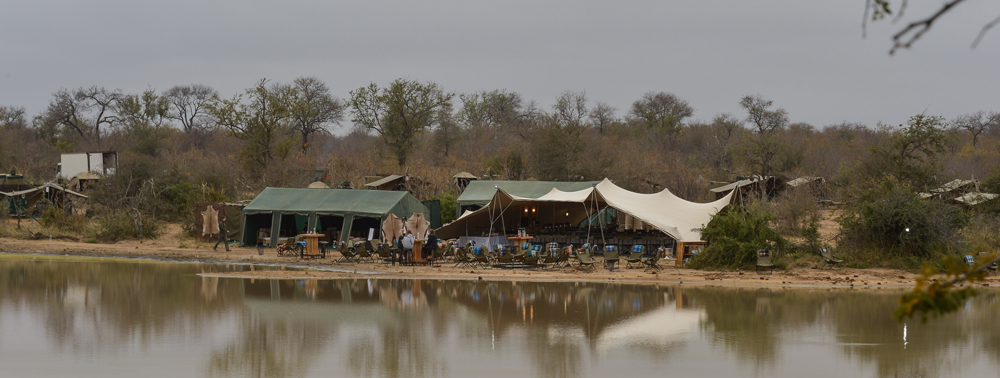
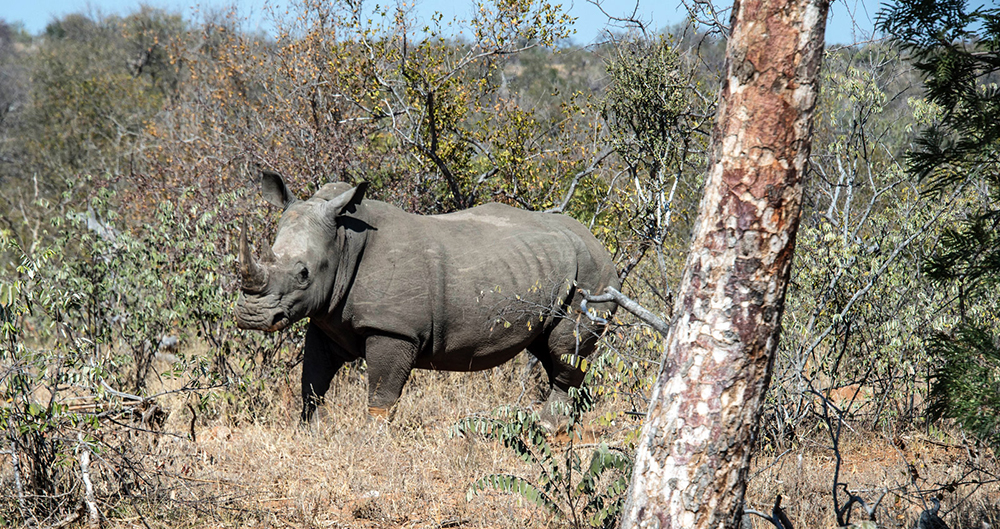
We had the opportunity of having one of the pre-eminent eco-journalists in Africa, Ian Michler, present with us on the trip. Ian, the creator of Blood Lions – a film about canned lion hunts – and I shared several ‘proper’ gin and tonics during the week and explored all aspects of environmentalism – from philosophical to political to economical. It was indeed an honour and a pleasure to spend time with him.
When I say this was a hands-on week, I mean just that. Dex and the scientists created the opportunity for us to do things that we will likely never again be able to do. To see the rangers and helicopter pilots rave about what we were doing and talk about how unique the experiences were, even for them, was an indication of the job that Dex and his team had done.
Just a sampling of some of my own experiences from the trip: I pulled the satellite collar around elephant necks, helped lift and move elephant and rhino limbs to make it possible to take anatomical measurements, milked an elephant for scientific purposes, injected an elephant with the antidote for the anaesthetic dart, removed a DNA sample from the drill bit shavings of a rhino horn, helped to place a tag into a rhino horn, and much, much more. All of this in the wild, on tens of thousands of acres of continuous fence-free land linking to the Kruger Park.
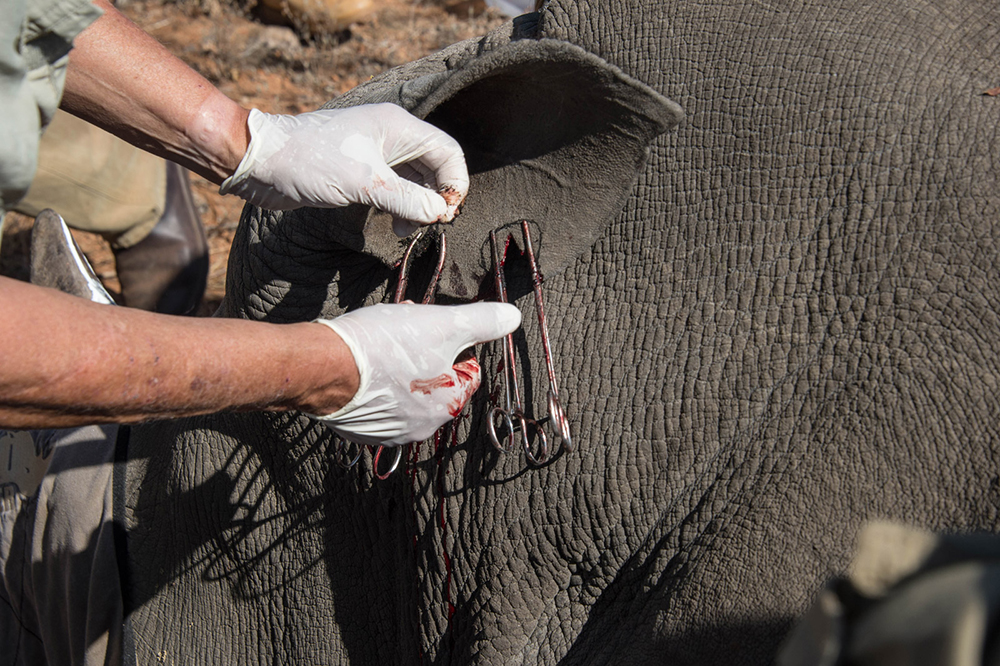
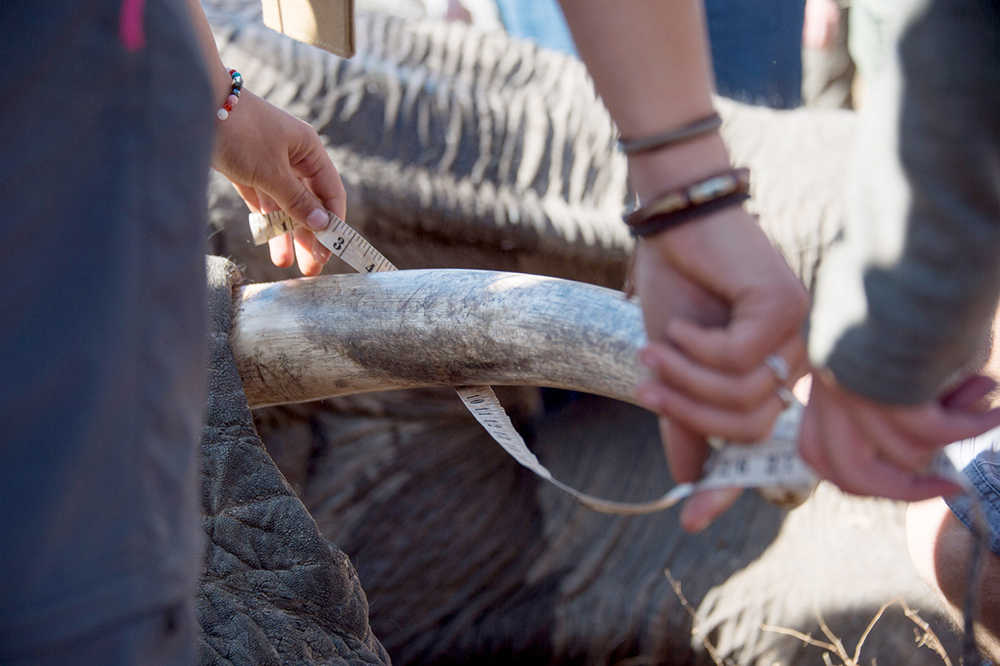
Along the way, we learned and witnessed firsthand the range of humanity’s severe impact on the environment. We learned about the impact of human encroachment on the wilderness. We learned about the economics of poaching. We saw, firsthand, the gut-wrenching result of poaching, where the world’s most magnificent animals are illegally shot and killed and left as food for vultures so that their horn can be ground up and used for mythical medicinal purposes somewhere far away.

The incredible people
We met and spent time with landowners and their team of anti-poaching rangers who are spending significant sums of money out of their own pockets to buy, protect and care for contiguous property that extends Kruger National Park through private land ownership, remove fences in between and pay for them to be patrolled so that future generations can view the planet in its raw form.
What we saw, in my view, was not the triumph of government but the triumph of individuals who have come together voluntarily, spending their time, money and resources, not to suck every last dollar of value out of the land through development, but in fact to protect and preserve it and its inhabitants.
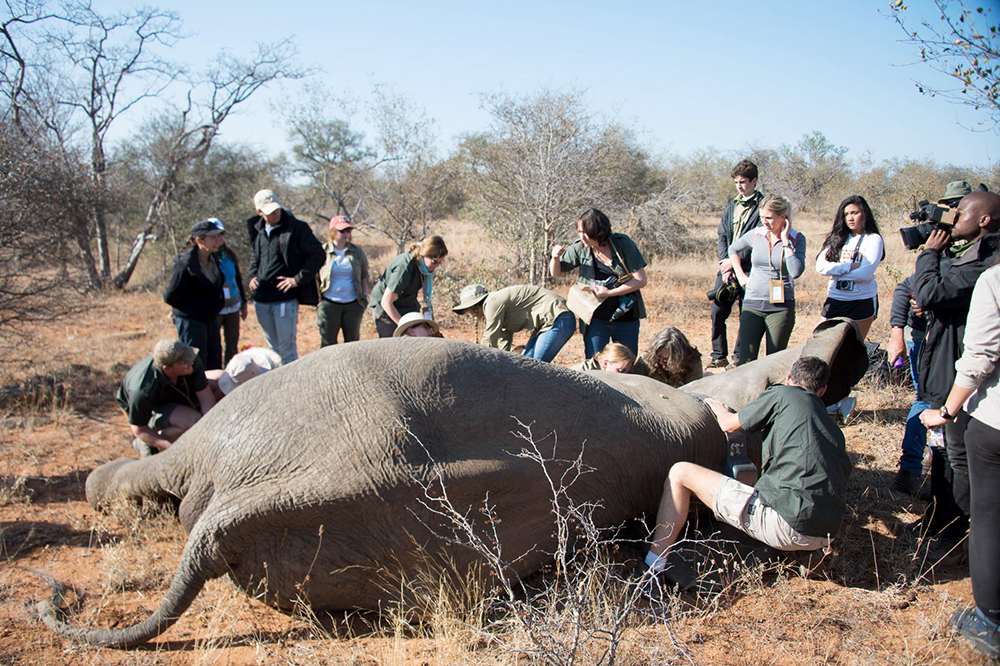
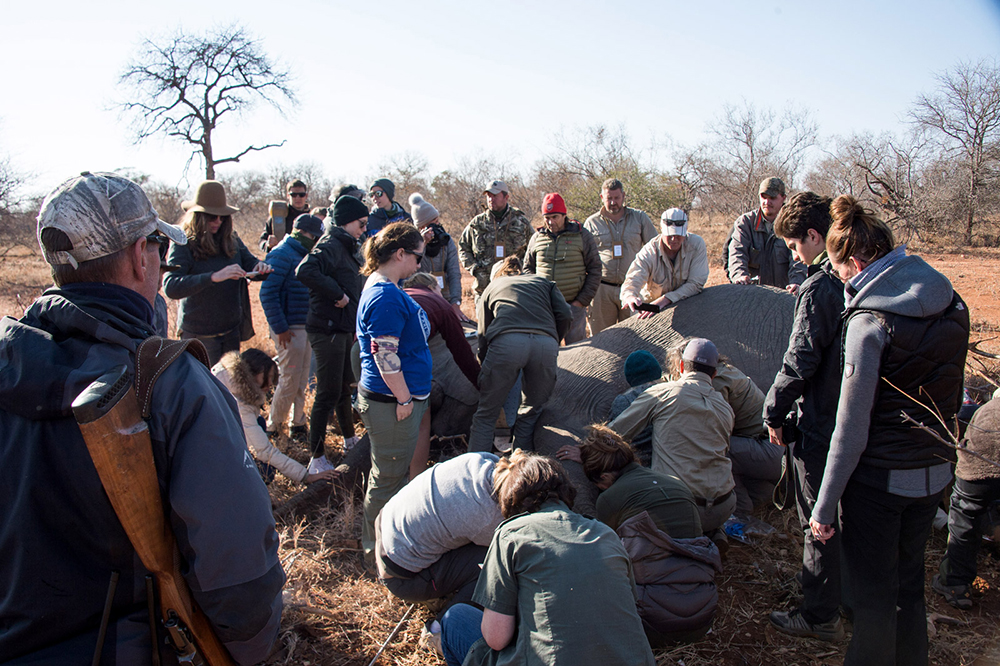
At the same time, all of these individuals show a deep and genuine commitment to the local population. They hire locally, invest locally and are doing their best to add economic value through training and education of the local communities. They understand deeply that these are not political issues. These are issues of right and wrong and basic humanity. These are issues about the present and the future of human-wildlife coexistence.
For example, one James Campbell – a man who grew up as a potato farmer in Ireland, only to end up on the board of directors of De Beers and Anglo American. In the years between picking potatoes and attending De Beers board meetings, he talked his way into Cambridge University, became a scientist and a geologist, got to know people at the highest levels of business and government, got involved with multiple businesses, and finally became a private reserve owner in a large block near Kruger – where he lives out his dream of being a conservationist.
We met and spent time in the bush and around the fire with Craig Spencer – a park ranger and the founder of the Black Mambas, an all-female local anti-poaching crew. Craig and his team oversee an extensive area of land (40,000 hectares if I remember correctly) and are in charge of protecting it from the barrage of poachers who are intent on ridding his land of its most magnificent inhabitants.
To say that he is a larger-than-life, charismatic personality is to diminish what it’s like to spend time with him. I am not sure if I have laughed harder recently than I did listening to Craig’s tales of his adventures and regaling his bush stories. He is a man from a different time and a different place. A man with the mannerism of a classic British private school education, but the look of a park ranger who has no problem spending a few nights out in the bush with nothing but a couple of blankets and a knife (and one who has never met a barber that he liked).
I will never forget when, in the immediate conclusion of tagging a particularly large rhino (after he had finished drilling a hole in the rhino’s horn so that the microchip can be dropped in), he took a couple of steps back, wiped the sweat off his forehead and then reached into his pocket, pulled out a pipe, filled it, lit it and began smoking it as if he was in some after-dinner gentlemen’s club in London 100 years ago. Classically, while taking puffs from his pipe, I watched him as he walked away from us while muttering something under his breath about how these magnificent animals “don’t stand an f&#ing chance against these f&#ing killers who don’t give a f#%& …”.
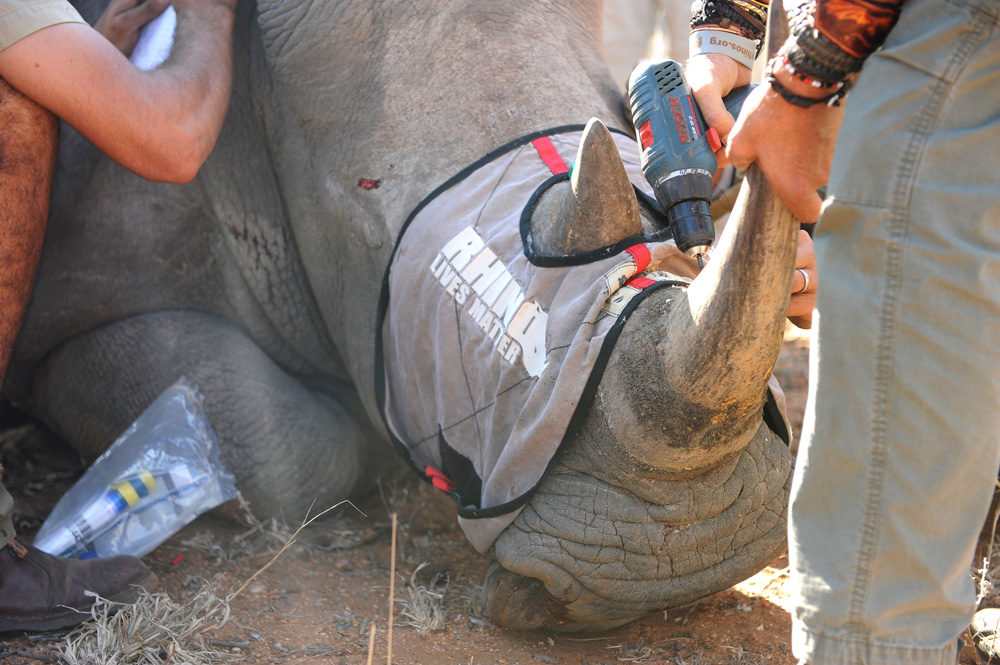
While Craig’s competence and confidence were mixed with the wit and humour of a comedian, our other rangers displayed theirs with good cheer, humility, a more quiet charisma, and an equal passion for every aspect of their surroundings. Led by Sean Pattrick, a published author, naturalist and anti-poaching expert with the body of a rhino and the calm personality of a Buddhist monk, these men and women never ceased to amaze us with the depth and breadth of their knowledge.
There was not a question, whether brilliant or not (lots of those) that they did not answer with depth, patience and expertise. Sean and his team were a world of knowledge, entertainment and observations.
But what was most striking about all of our rangers was the almost bizarre combination of their obvious physical strength, humility, respect and passion for the wildlife around them, as well as the sheer depth and breadth of their scientific knowledge about everything from termites and ants, to elephants and giraffe (and every living thing in between). These were the kinds of genuine, humble and intellectually curious people whom I would be proud to have the opportunity to call “my friends”.

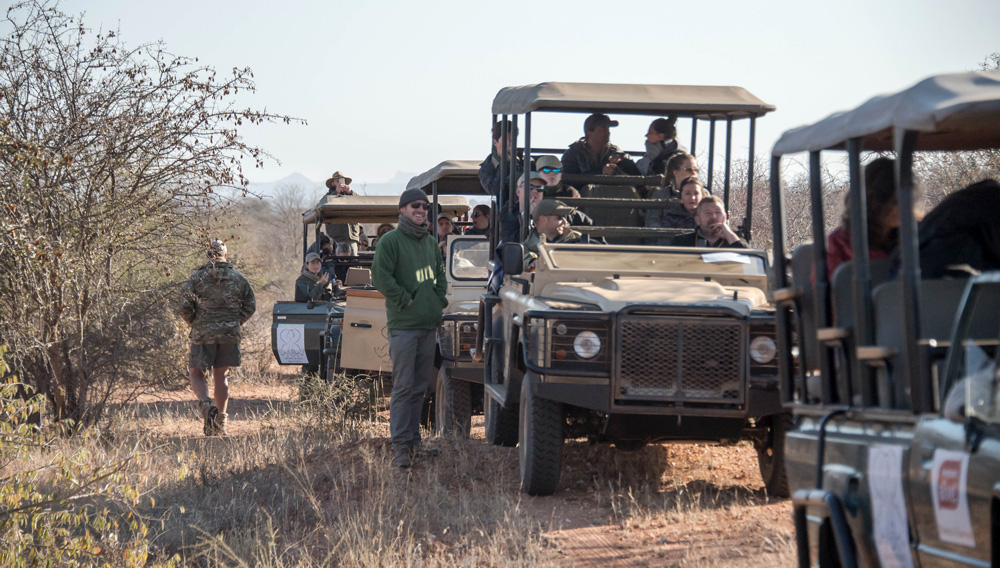
I will never forget tracking a lion on foot with Max and a few others, led by guides Sean and Quentin. Max and I walked behind Sean and Dex and watched Sean pick up the hundreds of different tracks over soft and hard surfaces while attempting to get into the lion’s head to figure out where it would’ve walked or under which bush it would’ve crossed. To watch him pick out the lion track amongst a plethora of marks in the dirt was pure magic.
Walking with these guys through the rugged African environment looking for a lion is an experience that one can’t easily forget. The level of harmony that they have achieved with their surroundings, including their understanding of the behaviour of these animals means that actual violent interaction between them and the animals is virtually non-existent and unnecessary.
Although one certainly can’t help but feel exposed while walking amongst the dead grass, the bushes and the rocks, not knowing where a lion could be lying perfectly camouflaged, the confidence and competence of our guides was all that we needed to take in everything around us.
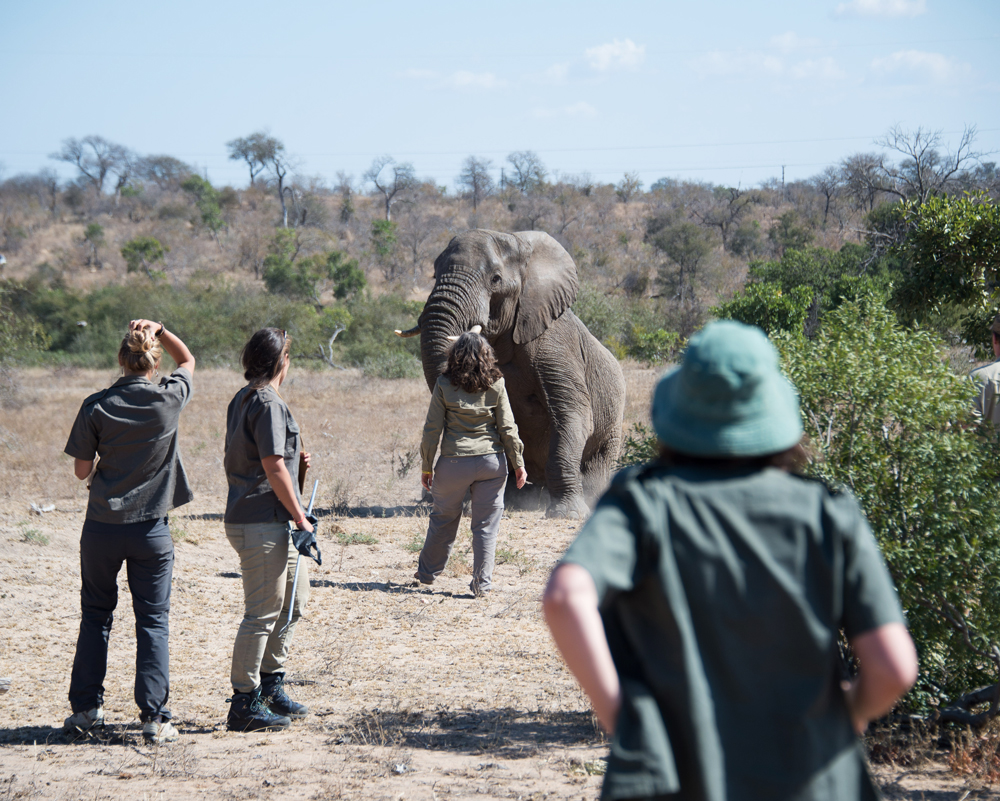
The ability of our guides to pick up on the smallest signals, the tiniest indentation in the sand, the wet portion of a small branch or some broken stalks of grass, and use those pieces to put together the puzzle of what animals were in front of us, where they went and what they were doing, was magic in motion.
The realities of Africa
The single most sombre and emotional experience of our trip came the next day when a group of us hiked from the camp to find a rhino that had been killed by poachers the day before. We had to wait a full day because the location of the kill is considered a crime scene that needs to be investigated by the authorities.
We discovered that the poachers had escaped without the horn, probably because they had heard or seen the anti-poaching units coming towards them.
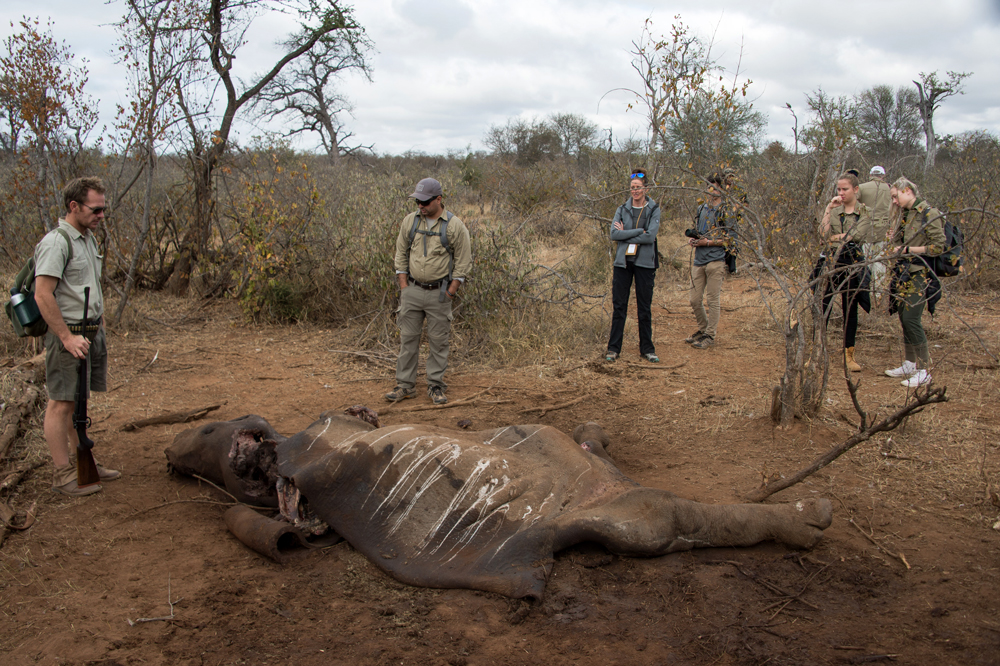
As you can see, by the time we followed the vultures to the carcass, the lions, hyenas and vultures had mostly eaten the whole animal (the white marks are the droppings from the vultures). As we got closer and closer to where the vultures told us the body of the rhino lay, the mood of the group got more grave and sombre. Grave, because we all knew there could still be lions hanging around the carcass, and sombre because we all knew we would soon come face to face with the reality of the purpose of our entire trip.
Walking up to the site of the rhino carcass was, in fact, as emotional and challenging as one can imagine. What made it more difficult was seeing the genuine sadness and anger of our rangers, at their helplessness. As Craig told me: “Look, I am not used to losing. I’m not used to being helpless. It just drives me mad to realise that I can’t stop this.”
This was not the end, however. Less than 24 hours later we learned that two pregnant rhino cows were killed less than two kilometres from our camp, likely by the same poachers who had not been able to get the horns from the first rhino. Tragically, the pregnant cows were killed and their horns removed. Their unborn calves do not get counted in the statistics, nor will any of the rhino calves that will never be conceived or born from those two dead cows.
The dedicated teams
In addition to the landowners, the rangers and the helicopter pilots – all of whom displayed an incredible command of their craft – we spent time with three of the most impressive and charismatic scientists I’ve ever met in my life: Drs. Cobus Raath, Peter Rogers, and Michelle Henley. These guys led a team of students, volunteers and professionals in what can only be described as Africa’s version of Formula 1 pit stop.
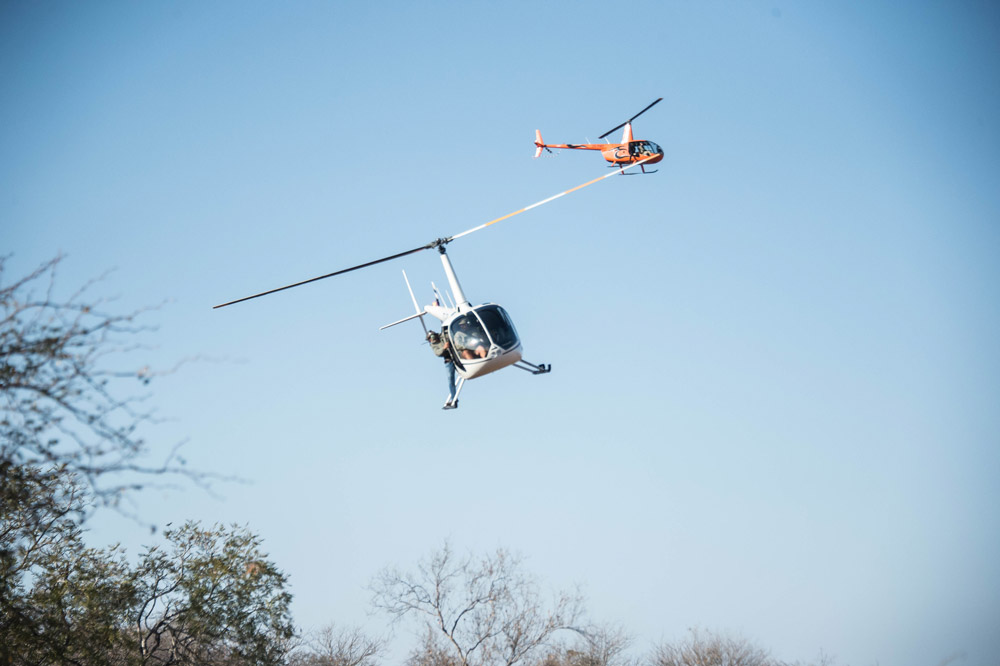
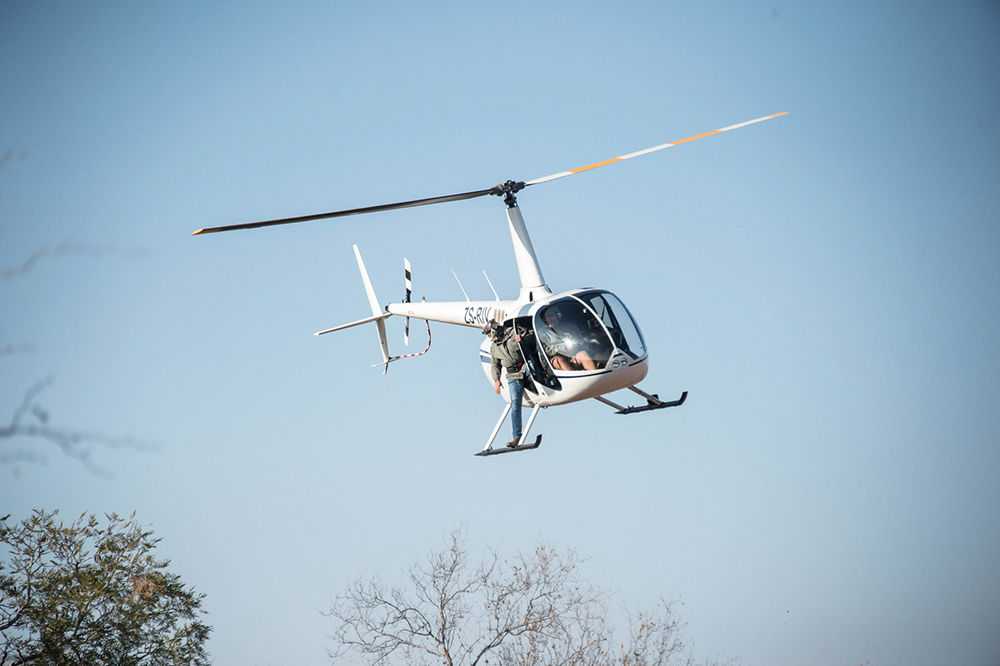
Being with these professionals and seeing them lean out of helicopters to fire darts, land the helicopters in an area the size of a couple of parking spots amongst trees and rocks, jump out of Land Rovers and helicopters to stabilise the animals with fascinating techniques (folding the ears of the elephant over their eyes or keeping their trunks open with a couple of small sticks) – and then within a few minutes take DNA samples, physiological and biological measurements, inject the animals with an antidote and run away and watch while, within a couple of minutes these animals awaken, stand up and walk away, is not something that any of us will ever forget.
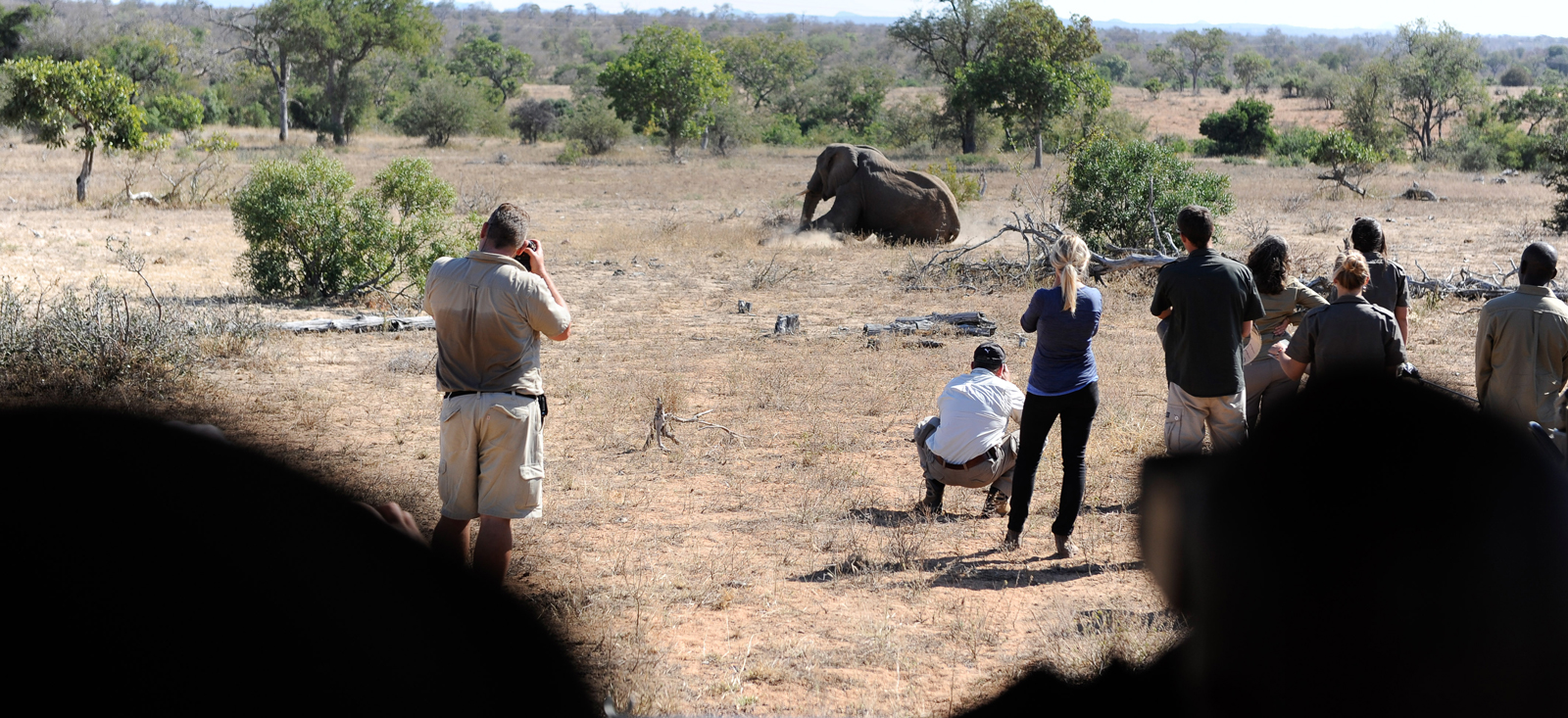
We were so incredibly fortunate to be allowed to help in such a hands-on manner, literally working side by side with these professionals on the 13 large animals that we collared and tagged. That privilege was given to us by these scientists who, in their role as team leaders, saw the benefits of involving us in such an intimate and practical manner. As someone on the trip said, these scientists were simply poetry in motion. Watching them direct the teams, in an environment of total controlled chaos, while patiently answering every last question was unforgettable. Their passion for protecting these animals is an inspiration for all of us who may at one point or another seek a higher purpose in what we do. That, in and of itself, was a critical takeaway from this past week.
Finally, I must say a word about my old friend Dex Kotze and my new YPO friends with whom I had the pleasure of sharing the experiences of the past week. I want to say thank you for allowing all of us to experience your backyard in a manner that very few ever have or ever will. The pictures speak for themselves, but the memories and the lessons will be unique to each of us individually. We each know what our take-away was from the past week.
I will hang this experience like another ornament on the Christmas tree of life, and will fondly look back at it often. I will do so because I don’t want to forget the emotional connections we made with each other and with the animals, and want to remember them when the mundanity of everyday life inevitably rears its head.
Watch a video of this incredible, once-in-a-lifetime conservation experience below:
The hands-on experience

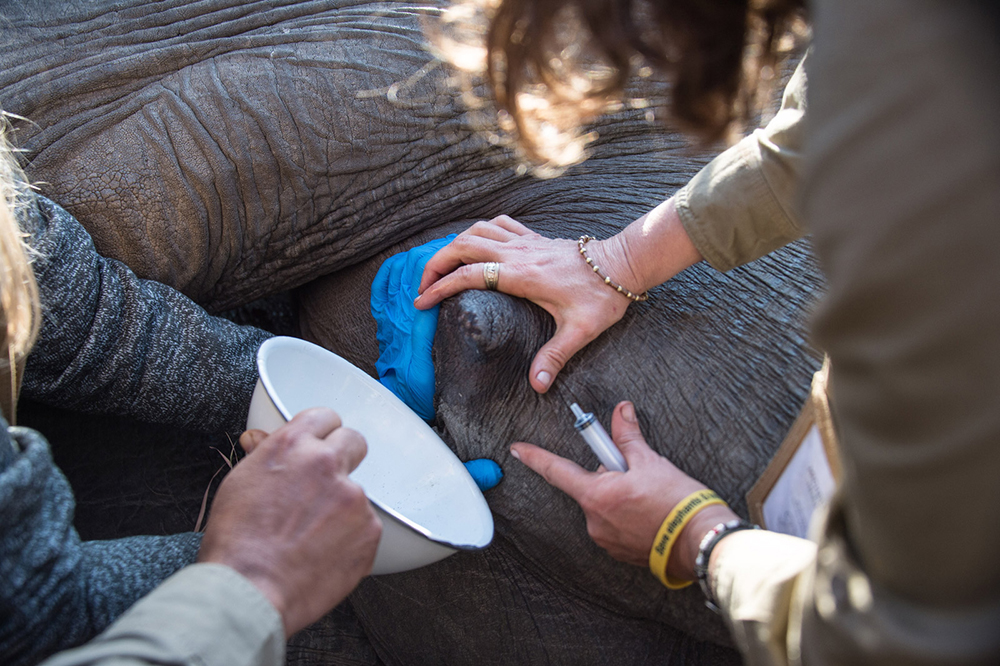
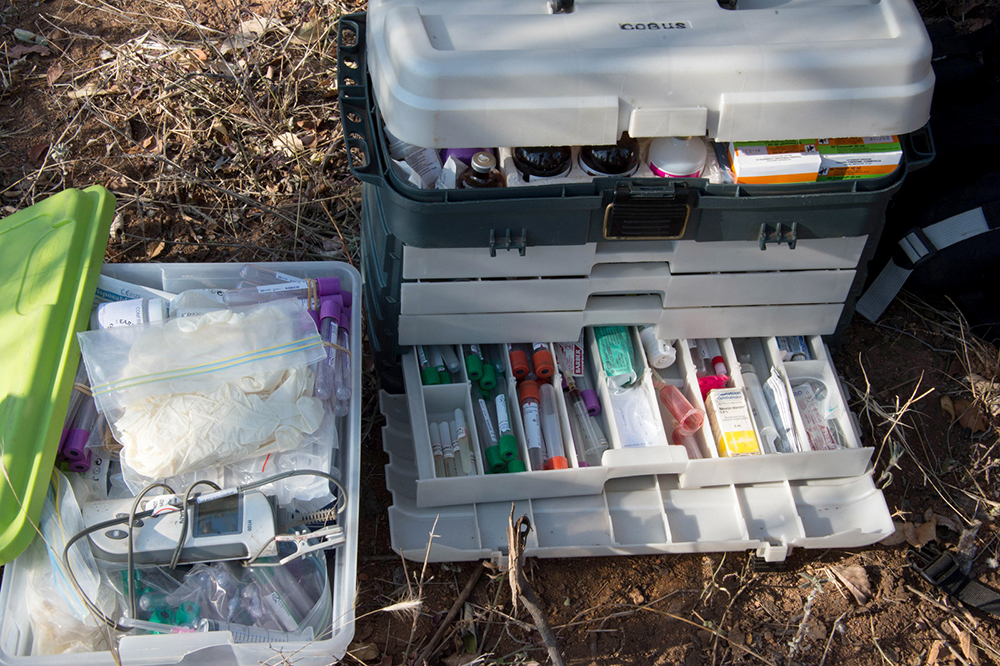
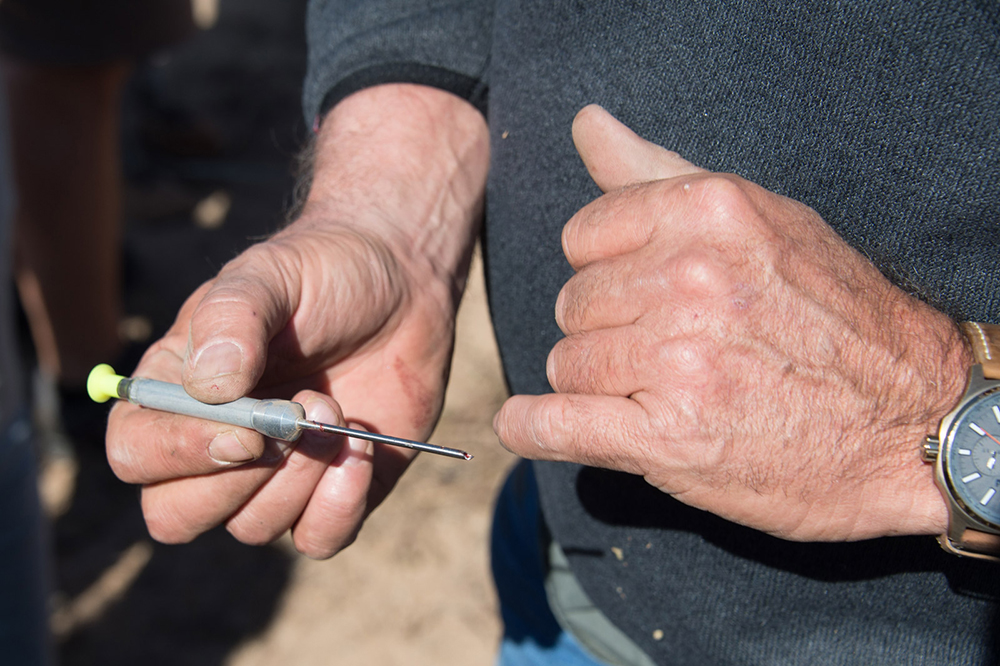


About the author
 Dan Afrasiabi is President and CEO at Geneva Woods Health Care Services and member of the YPO Pacific and the US at large chapters. He has found a special place in his heart for African conservation efforts and is now a lifetime ambassador for Mother Africa.
Dan Afrasiabi is President and CEO at Geneva Woods Health Care Services and member of the YPO Pacific and the US at large chapters. He has found a special place in his heart for African conservation efforts and is now a lifetime ambassador for Mother Africa.
To comment on this story: Login (or sign up) to our app here - it's a troll-free safe place 🙂.![]()




